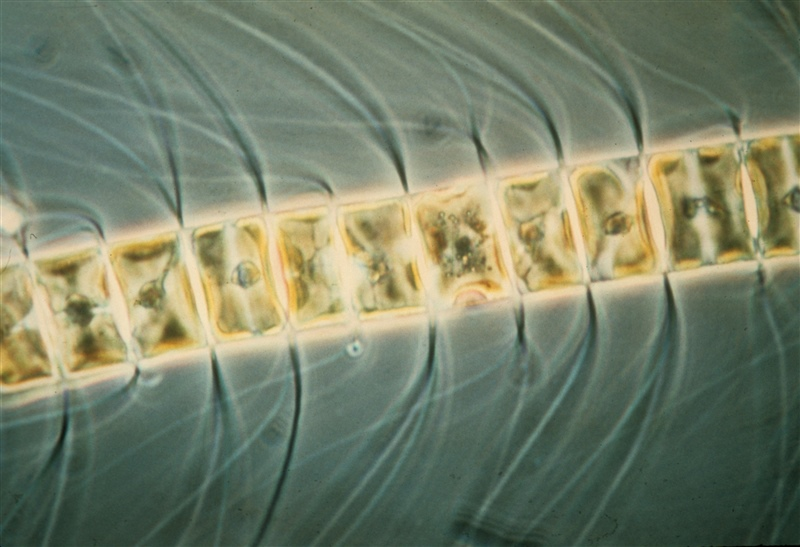A new study from NCCOS and NOAA Fisheries researchers identifies primary production as the limiting factor on the economic performance of fisheries. Economic performance includes both fisheries revenue and employment. Primary production is the growth of aquatic plants or organisms that conduct photosynthesis. These organisms serve as the base of the food web for most marine life.

Fisheries revenue and jobs are important contributors to the U.S. and global economy. U.S. marine fisheries are currently valued at $210 billion and contribute on average roughly 2.5 percent of the U.S. ocean gross domestic product. Understanding what drives this revenue and generates these jobs is important for maintaining U.S. marine fisheries economies.
While it is well understood that primary productivity ultimately limits how much catch can be sustainably harvested, this is the first time scientists have directly shown the relationship between basal ecosystem (or primary) productivity and regional fisheries economies. This economic dependence on productivity was found to be true for all eight main U.S. marine ecosystems and for nearly all 64 major international ecosystems.
The study takes a step-wise logical sequence to document that primary production sets the foundation for total ecosystem biomass or marine life, which in turn sets limits on total landings, revenue, and living marine resource-based employment in a given fisheries ecosystem.
The direct link of primary production and fisheries economic performance supports the need for continued implementation of ecosystem-based fisheries management and to develop a greater understanding of ecosystem overfishing (where total catch exceeds suitable ecosystem production limits) along with its economic consequences.
Monitoring primary production and its impacts on regional ocean economies is vital for understanding how the ocean is responding to shifts in production due to climate change, fishing pressure, and other stressors. Understanding this interconnectivity will allow scientists and resource managers to identify and respond to changes in ecosystem conditions and living marine resource economics more quickly and effectively.
NCCOS efforts to examine multiple stressors in coastal and offshore environments are advancing scientific knowledge about how changing oceans can affect primary production. These studies allow for improved forecasting of productivity shifts, and greater understanding of their potential consequences to marine economies and coastal communities. To learn more, visit NOAA Fisheries.
